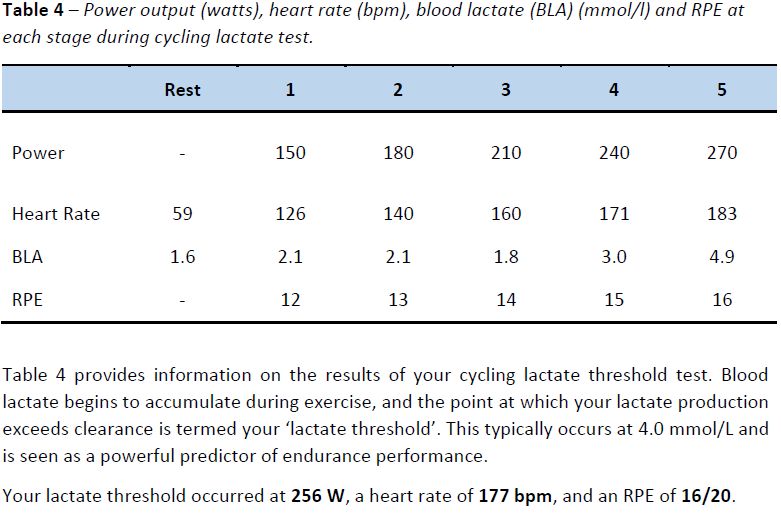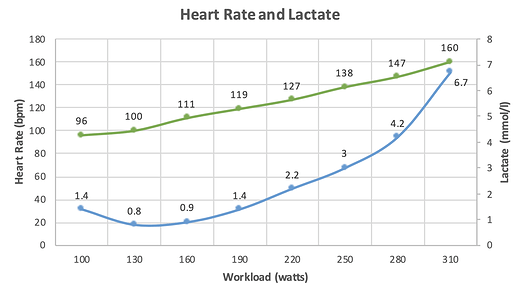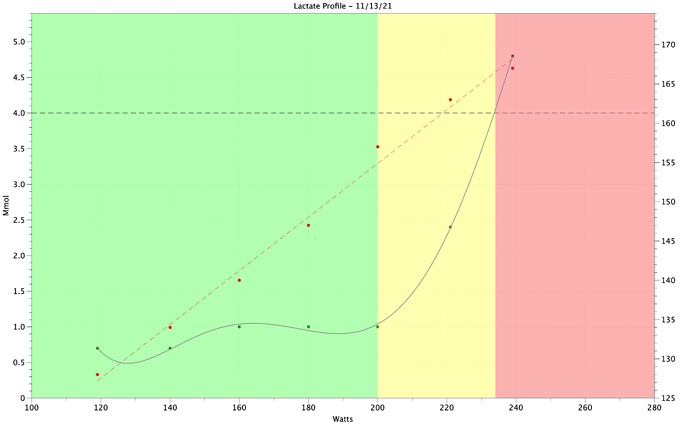Marco Altini of HRV4Training has an iPhone App which logs something called Detrended Fluctuation Analysis (DFA) which seems to show a value of 0.75 for something called Alpha 1.
I have no idea whatsoever what all that means except that I tried it out and on the couple of tests I’ve done it aligns really closely where I estimate from other means where my LT1 heart rate is. Nothing however about LT2. At $7 for the app it’s a somewhat cheaper than a lactate meter. The link to the app is on a tweet lower down the thread.
Thanks @ryan for the input!
LT1 265-270 W would be hard, but manageable for 1,5 - 2hours i would say. As a HR point of view 160-165bpm is at my 82-82% of my max(195). So for LIT rides, a would never go that high, but for 240W-245 maximum.
At LT2 300W , i have to be very well rested , even to be able to pedal for 30min at that level, it sits really at my 1 hour max hr (175).
Your assumption is spot on, i rely on CHO big time, even just above 270W (might be also due to the fact i’m a vegan?) As hard efforts recovery… i find 30/15sec HIIT at 390W waaaay easier than 4x8min at 320W. I think i never managed to did all 4 sets at that high watts.
I ride more seriously in the last 8 years or so. (i’m 39 right now @66kg)
Yes! I use this! It closely matches my estimated LT1 too. I like the way you can monitor the DFA Alpha 1 in real time during exercise using Marco’s HRV Logger app. Definitely worth a look. I also suggest providing feedback to Marco as it’s very new research and feedback is important. I also use Marco’s great HRV4Training to monitor my internal state on a daily basis.
I noticed that my LT1 HR is quite different for cycling and running. Now some may think that is obvious, but it wasn’t for me until I saw it in real time …
@neptuak @carytb What HR strap do you two use? I thought I read on “that other forum” that the Wahoo Tickr wasn’t best for this. Not sure ![]()
I use a Garmin HRM Pro HR strap. It generates the RR Interval data required for the calculations (not sure about the Tickr) and can connect to two Bluetooth devices. I connect it to the HRV Logger app and to Zwift (for my winter training). I guess you could achieve the same using Bluetooth and Ant.
Apparantly the Ticket does not work when connected by Ant+ but does when connected by Bluetooth. I use a Tickr and it appears to work OK. This a graph of a brief step test I did.
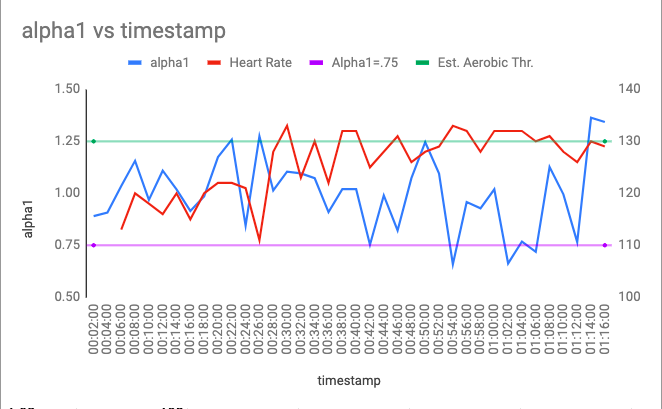
@carytb Well, there you go ![]()
I’ve got a Tickr, Bluetooth, and a pulse. I should be good.
I got a promotional email from HRV4Training (Marco) about the new app right after it appeared on TR forum but didn’t want to buy a new strap, etc. I also wasn’t following that thread as closely as I do others, so I may have missed the part about the Tickr…so apologies.
Thanks for the help, guys.
@ryan - hopefully you don’t mind my resurrecting this one. I did this test (below) a few years back now, but coincidentally my ‘threshold’ is about the same now. Is it possible to identify LT1 (in particular) from this? Obviously I’m four years older, and I also weight about 3kgs less. My training regime is broadly comparable to what i was doing then, as far as I can recall.
You’ll note one of the blood lactate values look a little bit odd. It’s a bit late to ask the people who undertook the test what happened there. Could it be physiological (I do recall relaxing a bit into the test), or more like a measurement or data entry error?
Interested to hear your and other’s thoughts. If I do another test in future is this a reasonable protocol, or would it be better to have something a bit more granular to be able to pick out the LT turning points?
@Mr.B how long were these steps?
What lactate analyzer was used during this test?
Do you have a fit file with the power, and heart rate from this entire test?
HI @steveneal, this is the only other info I have unfortunately:
The test consisted of a 3 minute warm up at 150W, followed by 3 minute stages, beginning at 180W. The power then increased at the beginning of each stage until lactate threshold was reached. At the end of each stage, your heart rate, blood lactate and RPE were recorded before increasing the intensity. Throughout the test we asked you to maintain a steady and comfortable cadence.
Hi @Mr.B, thanks for sharing that test result. Thanks to @steveneal for asking those important questions too. Knowing the analyzer and if it the calibration was checked beforehand is very helpful, along with more information about the protocol. I do see that odd lactate value of 1.8. This can occur relatively early in a test as the rider warms up. So yes, to your question, as you settle in and aerobic metabolism ramps up, you can sometimes see that decline in lactate. Here’s another example of that occurring after the first stage - for reference I normally use 4 min stages and start relatively conservatively depending on the athlete.
In this test case, a 3 minute warm-up + 3 more minutes at 180 is very short in my opinion. So having lactate drop from 2.1 to 1.8 like that does not seem out of the ordinary, especially since it is relatively close to your resting measurement of 1.6 mmol/l and you report feeling like you relaxed into the test at that point.
In terms of LT1 from your data, it’s hard to say for sure based solely on the table. I would suggest a lower starting power to get a more pronounced baseline lactate response. At 150 watts, which sounds like it was intended to be a warm-up intensity, your RPE response of 12 is getting close to “somewhat hard” on the RPE scale, which I would consider too high for warm-up. I’d like to see numbers in stage 1 that would approximate 8-11 on the Borg RPE scale. However, those details aside, and not having anything other than the numbers in the table, I would conservatively set an LT1 range for you between ~140-170 watts or ~120-135 beats and then suggest re-testing with a slightly longer warm-up and easier starting stage to see if you can get any improved baseline response.
@ryan thanks for that response. I agree in retrospect it was a surprisingly short warm-up, certainly I’d never try to do an intense session with such a short one. Your LT1 estimate sounds about right to me, and I’ve commented on another thread how that feels like the level of effort where things change. I think I’ll try to get another test done - unfortunately it won’t be with you guys as I’m in Europe, but I will look more closely into their protocol and especially the warm up length and proposed wattages (esp. the beginning one) and durations. Are there particular analyzers you recommend, or should be avoided in your opinion?
@Mr.B I agree with all the points @Ryan made, especially starting the test easier (likely 100watts) and using 4 minute steps.
I have had very good luck with Lactate Plus (out of USA but have had a few people in Europe get this as well). You could also look into the Scout if there is access to the analyzer and the strips for testing.
I agree with @steveneal in terms of the analyzers. I used the Lactate Pro (old one) in the past with good success. Now there is a Lactate Pro 2 available in some locations. Also used the Lactate Plus, which was initially a backup in the lab if we had trouble with the Lactate Pro, but have since moved to the Lactate Plus exclusively.
Quite a timely resurrection of a previous post on identifying LT1.
I did a test today to accurately identify LT1 for an upcoming block of work after a couple of recent races. I used a typical MLSS protocol: 10 mins steps, taking lactate values at 3 and 9 minutes looking for an increase in lactate greater than 1mmol/L between 3 - 9 minutes.
I’ve taken lactate readings during a few ramp tests over the last year plus doing the above protocol once in May with LT1 improving from ~200W to ~230W over that time, with LT1 HR typically between 141-144bpm. I did an INSCYD test in July which gave a threshold value 260W. I’ve spent the last couple of months trying to improve threshold in preparation for races, but don’t have an up to date value for it. A few software packages currently have my threshold at ~265W.
I’ve put todays results into a table and included avg HR for the last 30 secs before the 9 minute reading. I was expecting LT1 to be similar to my last test but I’m unsure what to make of todays test.
Sept 2021
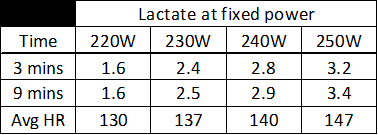
As you can see from the table I didn’t get an increase in lactate of greater than 1mmol/L in any of the steps. If I was going to just determine LT1 from lactate values I’d pick 225W, but if take previous HR data into account I’d pick 245W for LT1.
Interested to hear what coaches make of this.
May’s results included below
May 2021
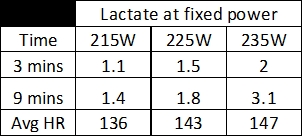
@PeteD I don’t use this protocol but based on your table I would agree 220 to 225w. There is no lactate increase at 220w, but there is a slight increase at 230w, so using 220 or 225w would likely be safe.
I would always use 100w start, 4m per step, 25w increase.
Based on the best from May there is lactate increase at the 215 watt step so I would say at that time LT1 was lower than 215w.
The heart rate could be lower now due to better respiration or increased stroke volume from your training since the May test.
I would recommend starting at a lower wattage, and always starting at the same wattage no matter the protocol you chose, as well as repeating the same wattages.
In May you chose 215, 225, 235 so maybe repeat those again but continue you higher to see the change in trend.
Just a few thoughts.
Steve
Thanks for the feedback @steveneal , looking at this again I don’t think my protocol really works for LT1 as the increases in lactate for most people may be quite small going from below LT1 to tempo and sweetspot. I’ve always used 25W steps during my ramp tests but was trying to get a more accurate value for LT1. I guess just using the 10W steps I used without the 3 and 9 minute values would suffice for a more accurate value if required.
I would agree with your comment, @PeteD, regarding your protocol. If we look not only at within-stage lactate changes, but also stage to stage, you effectively have one “typical” stage between your 220w and 250w steps (30w) in the September test. Those changes in lactate between those 220w and 250w are large enough that you can still determine LT1, and moving to straight 25w stages with 10 min sample times would be just as good. I would do a 5 and 10 min sample on the 10 min stages and that should suffice.
You may have seen this other thread already, but have you used the DFA alpha1 protocol at all to look for LT1? It was a pretty lengthy discussion in one of our other posts on A New Detection Method Defining the Aerobic Threshold. I’ve been using it with in-person testing and when it works, it works well; it seems to be pretty tight with ventilatory and lactate responses in most athletes I’ve tested. Some we didn’t have much luck with, but that’s why it’s always good to have lactate and/or ventilatory measures too.
Thanks for the detailed response @ryan, I remember seeing the thread on DFA alpha 1 but will have revisit it again. I didn’t record ventilation during this test but it has corresponded reasonably well for me in the past
Good morning,
I was hoping some of the coaches (@steveneal and @ryan) might be able to help me interpret a lactate test I did this morning.
General info:
- Conducted after an overnight fast (one cup of coffee prior to starting the test)
- Eight-minute steps
- Resting value taken just before starting was .5 mmol
Notes
The first time through, I had a reading of 3.6 mmol for 200 watts. After seeing a value of 2.4 mmol for 220 watts, I re-did the 200 watt step and ended up with a value 1 mmol.
The fit (line) used is a polynomial function.
Intepretation
Nice, flat curve until LT1 which I put right at 200 watts. This is good. Pretty narrow Z2 (three-zone model) and no clear second inflection point. As a result, I’m using 4 mmol (dashed line) to approximate MLSS.
Questions
Is my assessment of the curve correct?
Typically, I think the focus would be to flatten out the curve. However, based on what I interpret as a narrow Z2, I’m not sure that’s the correct approach for me. I’m wondering if instead I should focus on work just below and/or above MLSS?
Generally, I feel I need to move the second turn point. My understanding is the two tend to move together. I guess I’m asking if there’s a limit? If at some point, LT1 has moved so close to LT2 (85% based on this curve), that’s it’s time to spend more time focusing on raising the roof. For reference, pVO2 Max per WKO5 is around 330 watts. So…
- LT1 → LT2 → MAP
- 200 → 235 → 330
If that makes sense.
Thank you!
